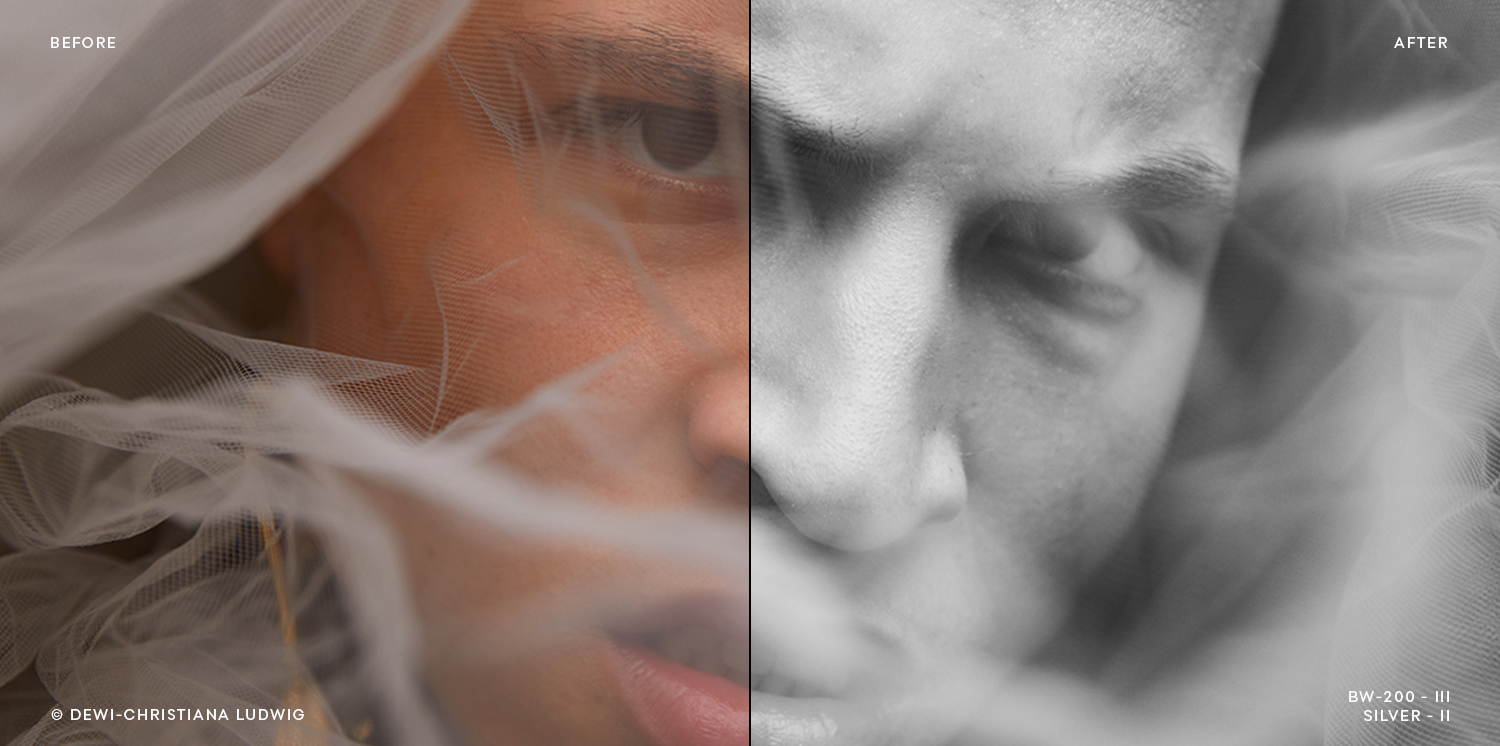Marrying the feel and character of your favorite films and classic black and white looks, with the speed, precision, and predictability unique to Capture One.
COPENHAGEN, July 29th, 2020: Capture One, the world’s leading name in photo editing software, has released the Beyond Film and Beyond B&W Style Packs. Rooted in and inspired by some of the most beloved film stocks and black and white imagery, these exclusive styles are steeped in legacy yet not weighed down by it, providing a route to images that are both classic and contemporary.
Derived from 4 color film stocks, the Beyond Film Styles present a broad but specific base of aesthetics that go beautifully with everything from wedding imagery, portraiture, travel & lifestyle, and fashion. Equally as inspired, the Beyond B&W Styles bring the intrigue, elegance, and focused drama of black and white, for truly enduring photographs.
Where other presets often bathe all images in monotony, each Style in this collection is presented in 3 sequential strengths, and a cadence of one-click authentic film grain options to choose from. This versatility allows photographers to tailor and define their look.
‘Being predominantly a black and white photographer, I think of and view my images in B&W before making my selects. With a single click I can apply a beautiful black and white treatment to hundreds of images, and with the range of style variants and grain at hand, I often explore and discover something I might not have thought of before. Beautiful results in just a few clicks, that’s what this collection brings.´ – Phil Penman, Leica Street Photographer
By design, these Styles are built with workflow in mind, as Capture One understands that a complicated editing process should not be required to achieve beautiful images. As such, the Beyond Collection offers an uncommon level of predictability and ease, so users will have confidence in the result of any style they choose to apply to any image and maintain congruency in any set of images.
Capture One Styles are uniquely developed to adjust the overall look and feel of an image with one click yet allow the image to be fully tuned to suit individual taste. With the option to add each Style as a layer, control that layer’s intensity, and use multiple layers and Styles per image, Capture One Styles like those in the Beyond Collection, can serve as either a starting point, finishing touch, or to give a nuanced flair.
Embargo
14:00 CET – July 29th, 2020
Availability
The Beyond Styles Pack is available at the Capture One e-store
Pricing
Single Style Pack: EUR59,- USD 49,- GBP 49,-
‘Beyond Collection’ Bundle: EUR89,- USD 79,- GBP 79,-
Samples
Please find before/after example imagery below/attached.
Contact
Global Head of PR & Communication Anton Greiffenberg: agb@captureone.com
About Capture One
Capture One creates award-winning photo editing software for every kind of photographer.
With an intuitive interface and powerful tools for editing and organizing, Capture One software delivers a seamless editing experience, fast workflows and total creative control. And with unmatched color handling for all major camera brands and industry-leading tethered support, it’s preferred by professionals and studios worldwide. Driven by innovation, users rely on Capture One to deliver cutting-edge features to keep their photography one step ahead.
Based in Copenhagen, Denmark with a team of global partners, Capture One empowers image creators globally with world-class knowledge, technical expertise and the ultimate creative tools.
Learn more here:
Capture One at: www.captureone.com
Facebook at: www.facebook.com/CaptureOnePro
Instagram at: www.instagram.com/CaptureOnePro
YouTube at: www.youtube.com/CaptureOneProDK
LinkedIn at: www.linkedin.com/company/capture-one



